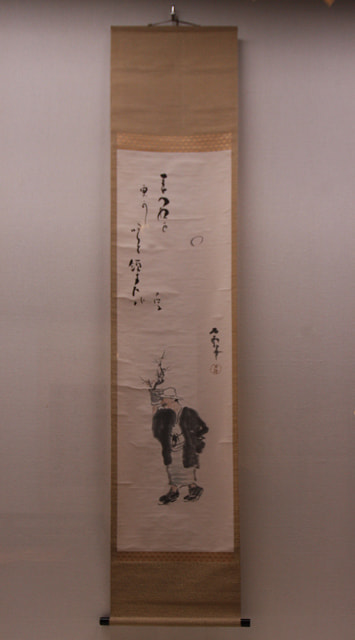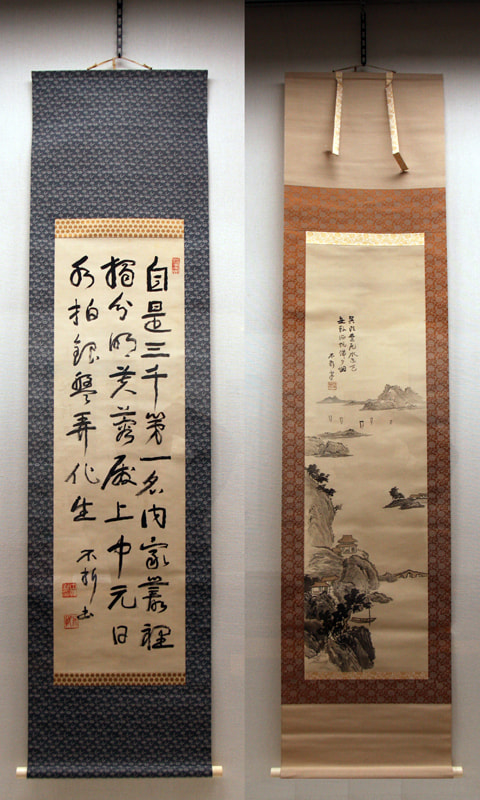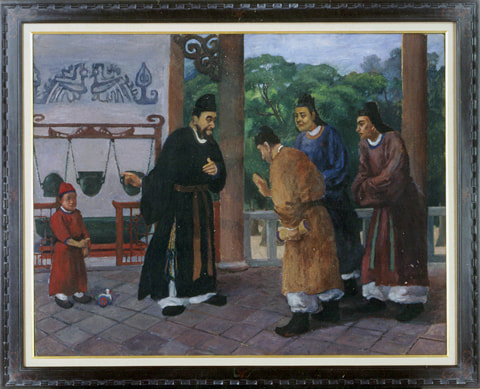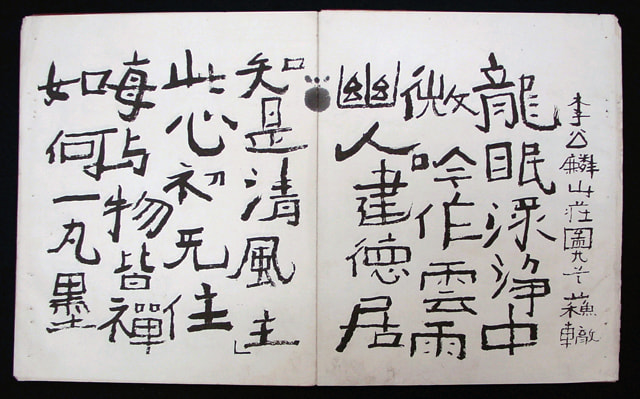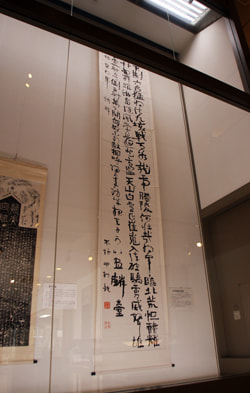
In the first exhibition room on the first floor of Fusetsu Nakamura Memorial Hall, Fusetsu Nakamura's calligraphy on a very long scrol witch is exhibited.
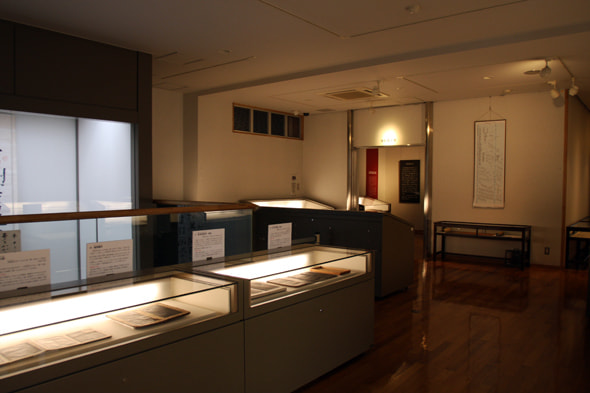
The second exhibition room of Fusetsu Nakamura Memorial Hall
Fusetsu Nakamura became a member of Taiheiyo Gakai (latte-day Taiheiyo Bijyutsu Kai) after studying in Paris. His work, "Kenkoku Sogyo," which was created under the theme of the Sun Goddess, was highly evaluated. For example, it was recommended for the first prize at the Industrial Exposition (sponsored by Tokyo Prefecture). Later, he served as a judge for the Bunten exhibition, which produced Taikan Yokoyama, Gyokudo Kawai, Seiki Kuroda, Fumio Asakura, Morie Ogiwara and others. He was also appointed as a member of the Teikoku art academy (Teiten), which was renamed as the Nitten Exhibition after the Second World War, and made great achievements in the art world in Japan. Also, he served as the first principal at Taiheiyo Gakai Kenkyu-sho (latter-day Taiheiyo Bijyutsu Gakko).
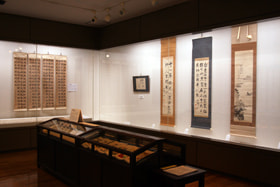
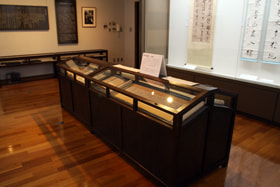
The Fusetsu Nakamura memorial room
There is a Fusetsu Nakamura memorial room, in which documents regarding his paintings and calligraphy are exhibited. Also, special exhibitions of museum collections are occasionally held.
Kiki no Imashime, or an admonition of vessels, (1941)
The painting was created under the theme of a historical event during the Spring and Autumn Period in China. In the painting, vessels (left), which overturn when they are filled up with water, are likened to the arrogance of human beings. A person in the middle of the painting is Confucius. Fusetsu Nakamura produced many historical paintings on Eastern themes, of which subject matters are historical events in China. Since many of those historical paintings are large works and reach a high degree of perfection, they are considered to be best works of Western-style painter Fusetsu Nakamura.

Ryumin-jou, or folding book of a sleepy dragon, (1908)
Fusetsu Nakamura continued to work hard, producing paintings and newspaper illustrations, conducting research on calligraphy and collecting documents. However, he suffered from a nervous breakdown due to overwork in 1908, and his doctor told him not to do any work. He wrote this "Ryumin-jou" as part of rehabilitation while visiting the Isobe spa for his treatment. The poems written on "Ryumin-jou" were composed by Su Zhe (brother of famous poet Su Shi: 1039-1112) for 20 views of Mount Ryumin. It is a set of 20 poems with five-character lines. When Fusetsu showed this work to Hekigoto Kawahigashi, Hekigoto strongly recommended him to publish the work. And, copies of this book were quickly sold out as soon as published. It became the talk of the calligraphy world at the time.


In the first exhibition room on the first floor of Fusetsu Nakamura Memorial Hall, Fusetsu Nakamura's calligraphy on a very long scrol witch is exhibited.
Kiki no Imashime, or an admonition of vessels, (1941)
The painting was created under the theme of a historical event during the Spring and Autumn Period in China. In the painting, vessels (left), which overturn when they are filled up with water, are likened to the arrogance of human beings. A person in the middle of the painting is Confucius. Fusetsu Nakamura produced many historical paintings on Eastern themes, of which subject matters are historical events in China. Since many of those historical paintings are large works and reach a high degree of perfection, they are considered to be best works of Western-style painter Fusetsu Nakamura.

Ryumin-jou, or folding book of a sleepy dragon, (1908)
Fusetsu Nakamura continued to work hard, producing paintings and newspaper illustrations, conducting research on calligraphy and collecting documents. However, he suffered from a nervous breakdown due to overwork in 1908, and his doctor told him not to do any work. He wrote this "Ryumin-jou" as part of rehabilitation while visiting the Isobe spa for his treatment. The poems written on "Ryumin-jou" were composed by Su Zhe (brother of famous poet Su Shi: 1039-1112) for 20 views of Mount Ryumin. It is a set of 20 poems with five-character lines. When Fusetsu showed this work to Hekigoto Kawahigashi, Hekigoto strongly recommended him to publish the work. And, copies of this book were quickly sold out as soon as published. It became the talk of the calligraphy world at the time.


















